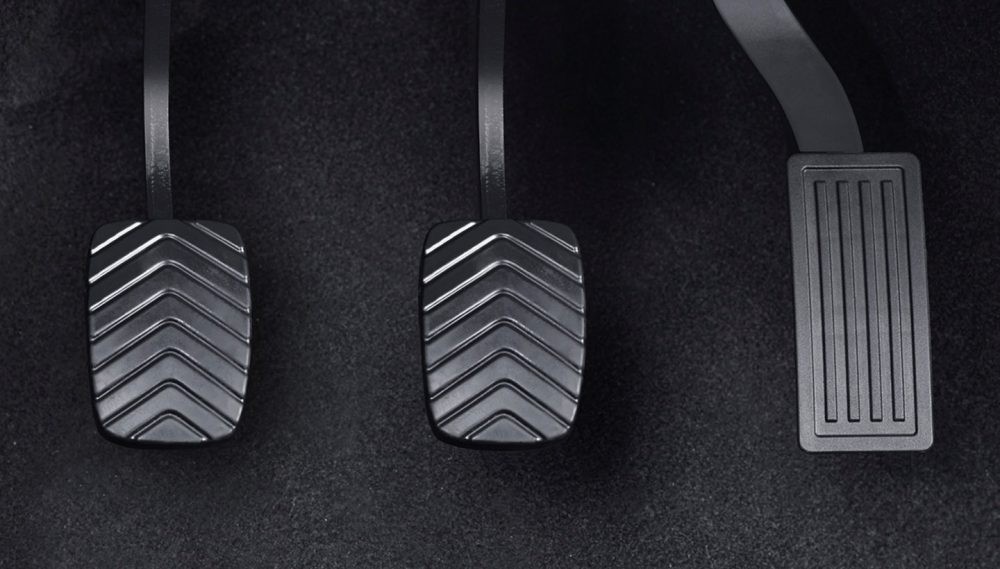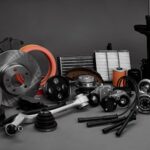Cars achieve stable and comfortable rides thanks to their complex systems, and the suspension system is a critical one. If any suspension components are damaged, it can significantly impact the vehicle’s handling and ride quality. Positioned strategically around the car’s body and wheels, the suspension system is engineered to handle the challenges of uneven road surfaces.
A well-functioning suspension system is essential for driving comfort and maximizing tire grip on the road. The primary role of a car suspension is to minimize and absorb vibrations originating from the road surface. This ensures passenger safety and comfort within the vehicle.
Beyond comfort, the suspension system plays a vital role in transmitting braking and driving forces to the car body through the friction between the tires and the road. It also supports the vehicle’s body on the axles and maintains the correct geometric relationship between the body and the wheels.
Car suspension systems vary depending on the vehicle type. Common types include independent suspensions like Trailing Arm, MacPherson strut, and Wishbone, as well as rigid suspensions such as Balance Arm, Parallel Leaf Spring, and Trunnion. Special suspension systems like air suspension also exist for enhanced ride quality and adjustability.
Regardless of the type, a suspension system comprises several components, each with specific functions. Modern vehicles often incorporate additional features to enhance suspension performance. Let’s delve into the essential Parts Of A Car Suspension and their functions.
1. Springs
Springs are fundamental components of a car’s suspension system. Their main function is to absorb and dampen the shocks and impacts generated when the wheels encounter uneven road surfaces. This prevents these shocks from being directly transmitted to the car body, providing a smoother ride.
Springs also play a crucial role in maintaining tire contact with the road, improving traction and handling. Without springs, a car would offer a very harsh and unstable driving experience.
Common types of car suspension springs include coil springs, leaf springs, and torsion bar springs, each designed for specific vehicle types and suspension setups. Coil springs are widely used in modern cars for their compact design and effective performance. Leaf springs, known for their durability, are often found in trucks and older vehicles. Torsion bars offer a different approach, using twisting motion to provide spring force.
2. Shock Absorbers (Dampers)
Shock absorbers, also known as dampers, work in conjunction with springs to control and dampen the up-and-down motion or oscillations of the springs. When springs absorb shocks, they tend to bounce back and forth. Shock absorbers prevent this excessive bouncing, ensuring a stable and controlled ride.
Inside a shock absorber, hydraulic fluid plays a crucial role. This fluid resists the spring’s oscillations by forcing oil through small passages or orifices as a piston moves within a cylinder inside the shock absorber.
The shock absorber’s functionality relies on valves that regulate oil flow. During compression (when the suspension is pushed upwards), a valve opens, allowing oil to flow easily and minimize damping. During expansion (when the suspension rebounds), this valve closes, forcing oil through a smaller opening, creating damping force.
Shock absorbers are categorized in several ways. Based on their operation, they can be single-acting or double-acting. Single-acting shock absorbers primarily provide damping during either compression or rebound, while double-acting types offer damping in both directions. Construction-wise, they are divided into twin-tube and monotube designs. Furthermore, based on the working medium, shock absorbers can be hydraulic or gas-filled, with gas-filled types often offering improved performance and reduced fluid aeration.
3. Ball Joints
Ball joints are crucial suspension components that handle lateral and horizontal loads acting on the vehicle. They also serve as pivot points, allowing for steering movement when the vehicle turns. Essentially, they connect suspension arms to the wheel hub, enabling smooth and controlled wheel motion.
There are typically two main types of ball joints: upper ball joints and lower ball joints. They work together to allow the suspension to move vertically while also permitting the wheels to turn for steering.
To minimize friction and wear, ball joints often contain lubricant. Some ball joints, particularly older molybdenum disulfide lithium types, require periodic grease replacement. However, modern ball joints with resin holders are often sealed and do not require regular lubrication changes, reducing maintenance needs.
4. Stabilizer Bar (Sway Bar)
The stabilizer bar, also known as a sway bar or anti-roll bar, is a suspension component designed to reduce body roll when a car turns. When a vehicle corners, centrifugal force acts on it, pushing the car outwards. This force is more pronounced at higher speeds and during sharp turns.
Without a stabilizer bar, excessive centrifugal force can lead to significant body lean, potentially causing instability and even rollover in extreme situations. The stabilizer bar counteracts this effect, keeping the car more level during cornering.
Typically, a stabilizer bar is a U-shaped steel bar that connects the lower control arms of the left and right wheels. The center of the bar is usually attached to the car’s body. Stabilizer bars are designed with high elasticity to effectively resist twisting forces and are tuned to match the vehicle’s specific handling characteristics. By linking the suspension movements of opposite wheels, the stabilizer bar transfers load and reduces independent wheel movement, thus minimizing body roll.
5. Bumpers (Bump Stops)
Bumpers in the context of suspension, also known as bump stops or jounce bumpers, are supplementary components within the suspension system. They are designed to protect critical suspension parts like the axle, frame, and shock absorbers from damage during extreme suspension travel, both in compression (bounding) and rebound.
Bump stops come into play when the suspension springs are compressed or extended beyond their normal operating range. During severe compression, the bounding bumper prevents the suspension from bottoming out, protecting components from harsh impacts. Similarly, the rebounding bumper limits excessive extension during rebound, preventing damage from overextension.
While the term “bumper” is commonly associated with the exterior safety structures at the front and rear of the car, suspension bumpers are distinct components with a specific protective function within the suspension system itself. They are crucial for maintaining suspension integrity and preventing costly damage during demanding driving conditions.
6. Lateral Control Rod (Panhard Rod)
The lateral control rod, also known as a Panhard rod or track bar, is a less commonly known but essential suspension component, particularly in vehicles with solid rear axles.
Its primary function is to control the lateral movement of the axle relative to the car body, especially when subjected to side loads during cornering or uneven road surfaces. The lateral control rod is typically installed horizontally between the vehicle’s axle and the chassis.
Without a lateral control rod, the axle could shift sideways under load, leading to instability and unpredictable handling. This rod ensures that the axle remains centered under the vehicle, maintaining proper wheel alignment and consistent handling characteristics. Like all car components, the lateral control rod requires periodic inspection and maintenance to ensure its continued effectiveness.
7. Upper and Lower Control Arms
Upper and lower control arms are vital parts of many independent suspension systems. They act as links, connecting the wheel hub or knuckle to the car’s chassis or frame. These arms allow the wheels to move up and down in response to road variations while maintaining wheel alignment and stability.
Not all suspension systems utilize both upper and lower control arms; some designs may only employ lower control arms. These arms function similarly to a human arm, allowing for vertical movement of the wheel assembly. In engineering terms, these components are also known as wishbones or A-arms due to their shape.
By controlling the wheel’s motion and geometry, upper and lower control arms are essential for ensuring stable handling, comfortable ride quality, and proper tire wear. They are critical for maintaining the correct camber and caster angles of the wheels as the suspension moves.
8. Strut Bar (Tension Rod)
The strut bar, sometimes referred to as a tension rod or radius rod, is a component in some suspension systems that helps stabilize the lower control arm and ensure correct front wheel alignment.
In steering systems, the front wheels are designed with a slight tilt, known as front wheel alignment or caster. This alignment helps the steering wheel return to the center position after a turn. Adjustments to this alignment are often performed during a process called wheel alignment or “spooring.”
The strut bar plays a role in maintaining this alignment by preventing the lower control arm from moving excessively forward or backward. It provides a fixed point for the lower control arm, contributing to stable steering and handling. Adjustments during wheel alignment procedures often involve manipulating the strut bar nut to fine-tune the front wheel geometry.
9. Knuckle Arm (Spindle)
The knuckle arm, also known as a spindle or wheel carrier, is a crucial car suspension component located at the front wheel assembly. The wheel rotates on a spindle shaft that is part of the knuckle arm. The knuckle arm also serves as a connection point, linking to the lower control arm via a ball joint and often to the upper control arm as well.
The knuckle arm’s robust design and critical location make it a vital part of the suspension system. Maintaining the suspension system, including the knuckle arm, is essential for vehicle safety and handling. Regular inspections at authorized service centers are recommended to ensure all suspension components are in good working order. Damaged suspension parts, especially critical components like the knuckle arm, should be replaced promptly to prevent further issues.
Modern vehicles like the Wuling New Confero S often feature independent suspension systems, which enhance ride comfort. Independent suspension designs, particularly in the rear, allow each wheel to react independently to road irregularities. This minimizes the transfer of bumps and vibrations across the vehicle, resulting in a smoother and more comfortable ride for both the driver and passengers.
If you experience any issues with your car’s suspension, it is crucial to have it inspected and addressed immediately. Using genuine car parts for any replacements is vital to maintain the vehicle’s safety and performance. The condition of your car’s suspension directly affects ride comfort, handling, and overall driving experience.
With the increasing number of car owners, understanding basic car components like the suspension system is beneficial. For new car owners, regular checks and awareness of suspension parts are particularly important for proactive car maintenance and ensuring a safe and comfortable driving experience.
This overview provides a comprehensive understanding of the key suspension components and their functions. Hopefully, this information serves as a valuable resource for car owners in maintaining and caring for their vehicles.

